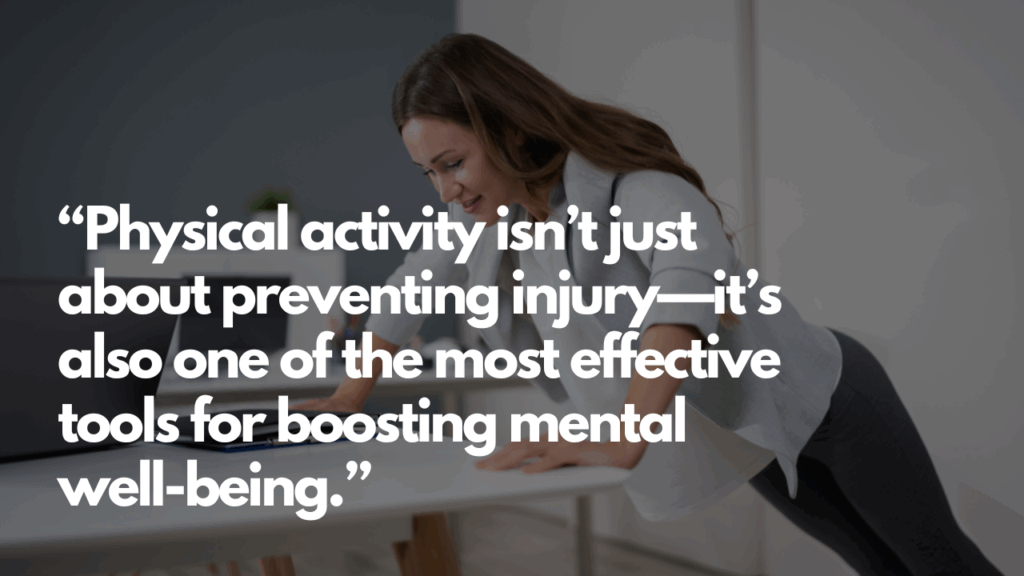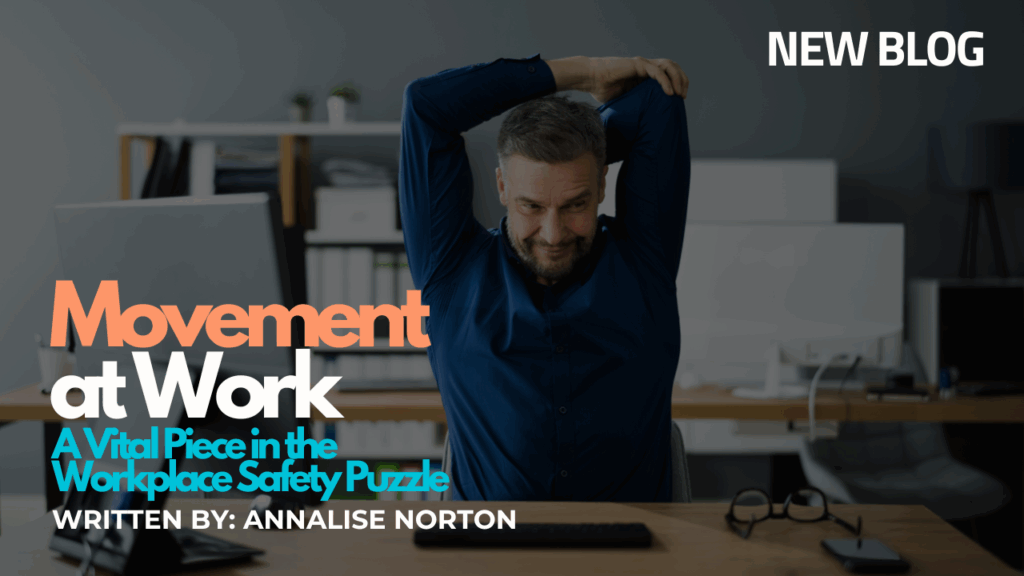April 28 marks the World Day for Safety and Health at Work—a day that reminds us how essential it is to create working environments that prioritize not only physical safety but also holistic employee health. While safety protocols and hazard prevention are often in the spotlight, there’s a powerful tool we can’t afford to overlook movement.
Why Physical Activity Matters in the Workplace
We know that modern work environments—especially sedentary ones—can contribute to a host of physical and mental health concerns: musculoskeletal pain, chronic disease risk, mental fatigue, and stress-related disorders, to name a few.
A growing body of scientific evidence supports the benefits of workplace exercise programs. According to a review published in the International Journal of Environmental Research and Public Health, regular physical activity at work can:
- Reduce the incidence of repetitive strain injuries and musculoskeletal disorders
- Lower levels of occupational stress and psychological fatigue
- Prevent the onset of psychosomatic disorders
- Improve quality of life and overall work performance
Put simply: movement at work is more than a “nice-to-have”—it’s a protective factor.

The Mental Boost We All Need
Physical activity isn’t just about preventing injury—it’s also one of the most effective tools for boosting mental well-being. Workplace wellness initiatives, like short daily exercise programs, have shown real results.
One six-week initiative involving over 11,000 participants across Australia, New Zealand, and the UK revealed that just 15 minutes of physical activity per day significantly improved participants’ mood, energy levels, sleep, and resilience to stress. After the program, 95% of participants met national activity guidelines—proof that a little goes a long way.
Practical Ways to Integrate Movement into the Workday
You don’t need a gym or a big budget to get your team moving. Here are some simple, evidence-backed ideas:
- Active Breaks: Encourage stretching or short walks during scheduled breaks.
Walking Meetings: Step outside or around the office instead of sitting through every meeting. - Standing Options: Offer adjustable desks or standing workstations.
- On-site or Virtual Movement Sessions: Short, guided exercise sessions during the day.
- Active Commutes: Support cycling, walking, or using public transport with practical amenities like showers or bike racks.
Supporting Change with Structure
Resources like the Exercise is Medicine Australia Workplace Physical Activity Guide provide excellent, practical frameworks for building and evaluating workplace wellness programs. These guides emphasise leadership support, employee consultation, and measurable outcomes—critical pieces in making a long-term difference.
Let’s Rethink Safety: Health Is Part of the Equation
This World Day for Safety and Health at Work, let’s shift the conversation. Let’s see movement not just as a fitness trend, but as an essential part of workplace health and safety.
Written By Uplift EP, Annalise Norton
References:
The impacts of climate change on occupational safety and health, click here
The importance of workplace exercise, click here
Physical Activity in the Workplace- ESSA, click here

